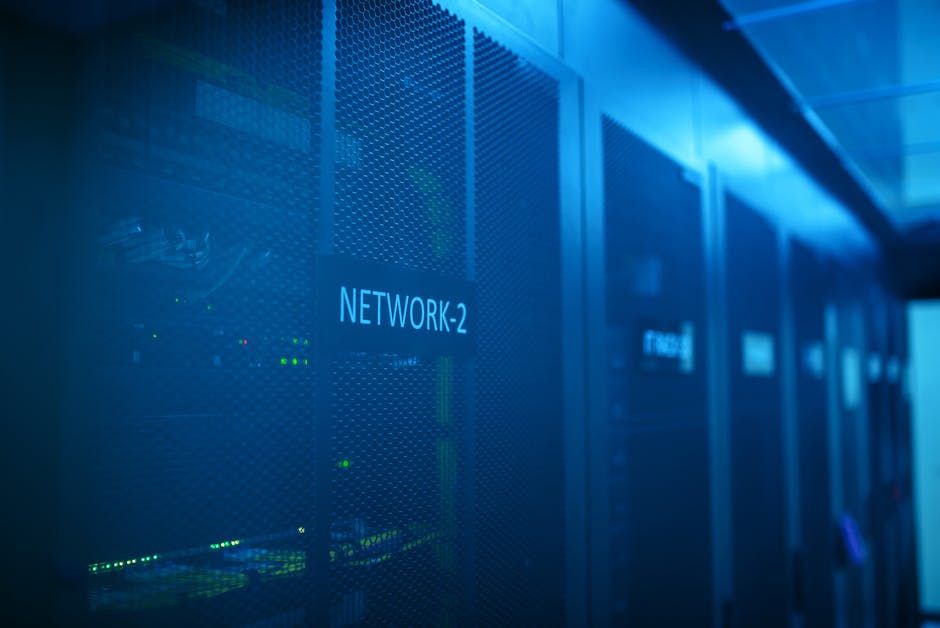In today’s digital landscape, cloud security is more crucial than ever. As applications transition to the cloud, ensuring that sensitive data remains uncompromised has emerged as a top priority for organizations. The shift towards serverless environments is redefining application architecture, allowing developers to focus on code rather than managing infrastructure. However, this convenience comes with its own set of challenges—particularly when it comes to securing application programming interfaces (APIs).
APIs serve as the backbone of modern applications, facilitating seamless communication between services. But as they become primary gateways to sensitive information, their protection has never been more important. In this article, we’ll explore best practices for securing APIs in a serverless environment, helping you navigate the complexities of cloud security with confidence.

Cloud security is a comprehensive framework of policies, technologies, and controls designed to protect data, applications, and infrastructures associated with cloud computing. As more businesses migrate to the cloud, understanding the nuances of cloud security is crucial.
Common threats in cloud environments include data breaches, account hijacking, insecure APIs, and insider threats. Hackers often target cloud infrastructures due to their multifaceted nature and the vast amounts of data they manage. A successful breach can lead to devastating losses, not only in terms of data but also reputation and revenue.
Implementing robust cloud security measures is a business imperative. It’s about safeguarding your information and ensuring compliance with regulations—an essential aspect in industries like finance and healthcare. Strong cloud security practices not only protect sensitive data but also build trust with customers, stakeholders, and regulatory bodies. In the fast-paced digital world, staying ahead of potential threats is not just recommended—it’s vital for the sustainability and growth of your organization.

Serverless architecture has transformed the way we build and deploy applications, enabling developers to focus on writing code without worrying about infrastructure management. However, this innovation comes with its own set of unique security challenges that organizations must navigate carefully.
One of the primary benefits of serverless computing is its ability to scale seamlessly in response to demand. Yet, this dynamic scaling can lead to increased attack surfaces. Since functions can be triggered by various events—HTTP requests, database changes, etc.—an attacker only needs to exploit one vulnerable entry point to affect an entire application. This necessitates a shift in how we secure these APIs.
Moreover, serverless environments often use various third-party services, such as databases and authentication providers, creating complex interdependencies. This makes it more challenging to maintain visibility and control over security protocols. Each integration adds another layer of potential vulnerability, where misconfigurations or inadequate security measures can lead to data breaches and unauthorized access.
Another challenge is the ephemeral nature of serverless functions. These functions are stateless and can spin up and down quickly, which complicates the application of traditional security measures. For instance, maintaining session state or applying consistent security policies across different function instances can be tricky. Unlike traditional applications, where you have a continuous server environment to monitor, serverless functions may execute in isolation and may not maintain a persistent identity, making them harder to audit.
Additionally, many developers are new to the intricacies of cloud security, which might lead to oversights. Relying on familiar development practices without adapting to the serverless paradigm can expose applications to risks. Understanding how these unique vulnerabilities affect API protection is crucial. Organizations must train their teams on the specific threats present in a serverless environment, fostering a culture of security awareness.
As you strategize your API protection in a serverless context, keep these challenges in mind. They highlight the need for tailored security measures that align with the fast-paced and mutable nature of serverless architectures.

In today’s cloud-centric landscape, your APIs are the gateways to your applications. Protecting these endpoints is not a luxury but a necessity. Below are some essential practices to fortify your API security in a serverless environment.
Authentication and authorization are your first lines of defense. Methods like OAuth 2.0 and JSON Web Tokens (JWT) are effective ways to ensure that only authorized users can access your APIs. OAuth provides a token-based system that lets users share specific data with applications without handing over their credentials. Meanwhile, JWTs allow for stateless authentication, resulting in smooth API interactions without constant server lookups.
Fine-grained access control is vital. Not all users need access to all data. Establish role-based access controls (RBAC) to tailor permissions, ensuring that users can only access the APIs and data pertinent to their responsibilities.
API gateways serve as a traffic director for your APIs, offering an array of security features. They can enforce security policies, handle authentication, and manage traffic. For instance, employing rate limiting ensures that no one user can overwhelm your API with requests, while request validation filters out harmful input before it reaches your application.
Additionally, API gateways can provide centralized logging and monitoring, making it easier to track usage patterns and detect suspicious activities.
Data security is paramount. Always use encryption to protect sensitive information, both in transit and at rest. With protocols like SSL/TLS, you can secure data as it moves between the client and the server, preventing eavesdropping and man-in-the-middle attacks. For data stored in databases or cloud storage, utilize encryption at rest to safeguard it against unauthorized access.
Regular monitoring and logging are essential for understanding how your APIs are used and for detecting any anomalies that could indicate a security breach. Employ monitoring tools to keep an eye on request patterns, errors, and response times. Logging valuable data will help you trace the path of any potential security incidents, enabling a rapid response.
Your application relies on numerous third-party libraries, which can introduce vulnerabilities. Regularly audit your dependencies and ensure they are up to date. Tools like Dependabot can alert you to outdated libraries and automatically propose updates, reducing your security exposure.
Neglecting to update these dependencies could open the door to attacks that exploit known vulnerabilities in outdated software.
Automated security testing is a vital component of a proactive security posture. Implement Static Application Security Testing (SAST) and Dynamic Application Security Testing (DAST) to catch issues early in the development lifecycle. Regular vulnerability assessments and penetration testing can also be beneficial, helping you identify and remediate potential weaknesses before they can be exploited.
Integrating security into your CI/CD pipeline ensures that security checks are a regular part of the development process, rather than an afterthought.
By following these best practices, you can significantly mitigate the risks associated with API exposure in a serverless environment. Always remember: maintaining security is an ongoing journey.

In today’s digital landscape, ensuring that only the right people have access to your APIs is critical. Strong authentication and authorization processes act as the first line of defense against unauthorized access. Here’s how to effectively implement these measures:
JWT (JSON Web Tokens): A compact and secure way of transmitting information between parties. JWTs can include claims about user identity and are cryptographically signed, making them tamper-proof.
Choosing the Right Method:
Select an authentication method that best suits your application’s needs while balancing a user-friendly experience.
Once authentication is established, implement fine-grained access control to ensure users can only perform actions they’re authorized to do:
Role-Based Access Control (RBAC):
Assign permissions based on user roles. For example, an employee in finance may access financial data APIs while someone in marketing does not.
Attribute-Based Access Control (ABAC):
Assign permissions based on user attributes, adding complexity and flexibility to access decisions.
This approach minimizes the risk of exposing sensitive information to unauthorized users.
Importance of Reviews:
Regularly review and update the permissions tied to various roles. This helps eliminate outdated access, which can become a vulnerability as employees change teams or leave the organization.
Audit Practices:
Conduct regular audits of user roles and permissions to maintain a tight security posture.
Enhancing Security:
Consider adding an additional layer with Multi-Factor Authentication (MFA).
Benefits of MFA:
By requiring a second form of verification (like a text message or authenticator app), you significantly boost security. Even if a password is compromised, MFA reduces the risk of unauthorized API access.
By implementing strong authentication and authorization protocols, you create a solid foundation for securing your APIs in a serverless environment. Remember, it’s not just about locking the door; it’s about ensuring that only the right keys can unlock it.

API gateways serve as critical gatekeepers in the architecture of modern applications, particularly in serverless environments. Acting as an intermediary between clients and your backend services, these tools not only facilitate communication but also enforce essential security measures.
One of the primary benefits of using an API gateway is its ability to implement strong authentication and authorization protocols seamlessly. By centralizing these functions, you can streamline security management, ensuring consistent application of security policies across all APIs. Methods such as OAuth and JSON Web Tokens (JWTs) can easily be integrated into the gateway, allowing you to control who accesses your APIs and under what circumstances.
In addition to authentication, API gateways offer features such as rate limiting and throttling. This means you can control how many requests a client can make in a given timeframe, protecting your APIs from abuse and preventing unexpected spikes in traffic that could lead to service disruptions. Rate limiting defines user behavior, ensuring that no single user can overwhelm your service, while throttling provides an immediate response to excessive usage, maintaining overall system performance.
Another essential feature of API gateways is request validation. This involves checking incoming requests against predefined rules to ensure that they are well-formed and comply with expected parameters. This can help filter out malicious payloads and minimize the risk of attacks such as SQL injection or cross-site scripting (XSS). By enforcing validation at the gateway level, you decrease the chances of vulnerable endpoints being exploited.
Integrating an API gateway into your architecture not only bolsters security but also enhances the efficiency of your API management. By centralizing security measures, you simplify the process of monitoring and logging API activity, allowing better visibility into access patterns and potential threats. In a serverless landscape where scaling and agility are paramount, an API gateway is not just an asset—it’s a fundamental component for maintaining robust cloud security and protecting your APIs from an ever-evolving threat environment.

In the realm of cloud security, the integrity of your data hinges on effective encryption. This is particularly crucial when dealing with sensitive information within serverless environments, where traditional perimeter defenses may no longer apply. Encrypting data both in transit and at rest is non-negotiable; it protects your data from unauthorized access and potential breaches.
When data is transmitted over the internet, it’s susceptible to interception. That’s where secure data transfer protocols come into play. For API communications, using SSL (Secure Sockets Layer) or TLS (Transport Layer Security) is essential. These protocols create a secure tunnel, ensuring that the data exchanged between clients and servers remains confidential. Always enforce HTTPS for your APIs to add that essential layer of protection.
But encryption doesn’t stop with data in transit. When it comes to data at rest—whether it resides in cloud storage, databases, or any form of persistent storage—it’s equally important to employ encryption. This adds a safeguard against potential data breaches, ensuring that even if unauthorized access occurs, the data remains unreadable without the proper encryption keys.
A best practice is to manage encryption keys separately from your data. Use a dedicated key management service (KMS) to handle encryption processes securely. This reduces the risk of exposure and adds an additional layer of security.
In summary, securing data in transit and at rest is critical. By utilizing strong encryption methods and maintaining rigorous data protection practices, you can defend against many common threats and strengthen your API’s security posture in a serverless environment.

Monitoring and logging API activity is crucial in maintaining the security of your serverless applications. These practices not only help you detect anomalies but are also invaluable for understanding how your APIs are being used. Here’s a closer look at how you can effectively implement monitoring and logging.
First, leverage comprehensive monitoring tools that provide real-time insights into API traffic. Tools like AWS CloudWatch, Google Cloud Monitoring, and Azure Monitor can help you track key metrics such as request rates, error rates, and latencies. Utilize these metrics to set up alerts for unusual activity, which might indicate potential security breaches or misuse of your APIs.
Next, establish a robust logging strategy. Detailed logs can help you trace back any malicious activity and understand the context in which it occurred. Capture information like the request method, endpoint accessed, user identity, timestamps, and source IP addresses. Store your logs in a secure and centralized location for easy access and analysis.
Remember, logging alone isn’t enough. Regularly review your logs to identify patterns and spot anomalies. Automated tools can assist in this process, allowing you to sift through vast amounts of data more efficiently. Integrating machine learning algorithms can enhance your ability to detect deviations from normal behavior, further strengthening your API’s security posture.
Lastly, ensure compliance with data protection regulations by implementing proper log retention policies. Define how long logs should be kept and ensure that sensitive information is handled appropriately. This not only aids in forensic analyses but also protects you legally should any security incidents arise.
In summary, actively monitoring and logging your API activity provides essential visibility into your serverless environment, allowing you to mitigate risks and respond swiftly to threats. By investing in the right tools and practices, you’ll be better equipped to safeguard your APIs against potential vulnerabilities and attacks.

In the world of serverless architecture, applications often rely heavily on various third-party libraries and frameworks to function optimally. While these tools can save time and streamline development, they come with their own set of security challenges. Vulnerabilities in third-party dependencies can act as gateways for attacks, allowing cybercriminals to exploit weaknesses and gain unauthorized access to your APIs.
It’s crucial to stay vigilant about these dependencies. Regularly checking for updates and patches is not just a best practice; it’s a necessity. Most libraries release updates frequently, addressing security vulnerabilities and enhancing functionality. By consistently updating your dependencies, you can minimize the window of opportunity hackers have to exploit known issues.
To streamline this process, consider implementing automated dependency management tools. These tools can help monitor for updates, pull new versions, and even alert your team when critical vulnerabilities have been disclosed. The goal is to minimize manual efforts while ensuring that your stack remains secure and up to date.
Additionally, don’t forget to vet the libraries you’re incorporating into your application. Prioritize ones with a solid community support base and active maintenance. A well-supported library is less likely to have unresolved vulnerabilities, reducing your overall risk.
In summary, regularly updating and patching dependencies is an essential component of API security in a serverless environment. It’s an ongoing task that pays off by keeping your applications safe from evolving threats.

In today’s fast-paced tech landscape, regular security audits and testing have become non-negotiable. Automated security testing is essential, employing tools that perform Static Application Security Testing (SAST) and Dynamic Application Security Testing (DAST). SAST analyzes your source code for vulnerabilities before deployment, while DAST targets running applications to uncover vulnerabilities during real-time operations. Think of them as your first line of defense.
Besides automation, don’t overlook the value of manual vulnerability assessments and penetration testing. Engage skilled professionals who can simulate attacks, offering an external perspective on potential blind spots in your security posture. These experts can provide tailored insights and leverage their experience in identifying complex vulnerabilities that automated tools might miss.
Regular assessments also keep your security practices aligned with evolving threats. Cybercriminals are constantly refining their techniques, and your security measures need to keep pace. Different industries have unique compliance mandates that require regular testing, so staying updated isn’t just a good idea—it’s often a regulatory necessity.
Ultimately, treating security audits and testing as ongoing processes rather than one-off tasks can significantly strengthen your API security. By making these evaluations a habit, you can identify weaknesses in your APIs before they are exploited, ensuring a proactive stance in your cloud security strategy.

In a world where digital transformation is accelerating, ensuring the security of your APIs in a serverless environment cannot be overstated. We’ve explored several crucial aspects of cloud security, from understanding inherent threats to emphasizing robust protection measures specifically suited for APIs. A strong authentication and authorization framework is your first line of defense. Implementing API gateways provides critical management capabilities, while encrypting data remains essential in safeguarding sensitive information in transit and at rest.
Moreover, regular monitoring and logging practices enable you to detect and respond to potential threats promptly. Keeping your dependencies up to date reduces the risks from known vulnerabilities, and conducting regular security audits ensures that you’re not just reactive, but proactive in your security strategy.
The landscape of cloud security is ever-evolving, and so are the tactics employed by those seeking to exploit vulnerabilities. By adopting these best practices, you not only enhance the security of your applications but also build a resilient foundation for your business. Ongoing vigilance and adaptation are key—staying informed and prepared will equip you to navigate the complexities of cloud security confidently. Now is the time to act and fortify your defenses against the realities of today’s digital threats.